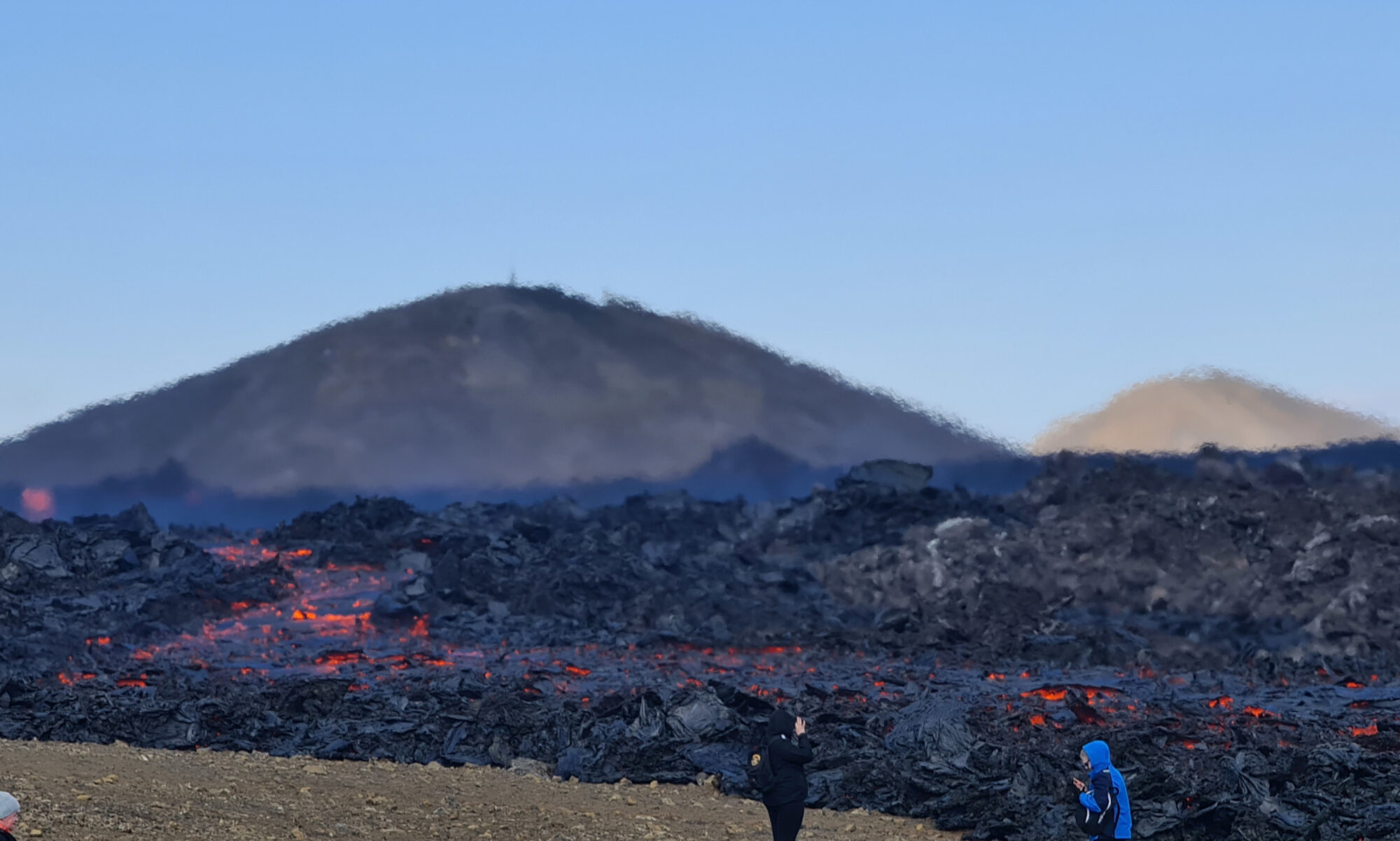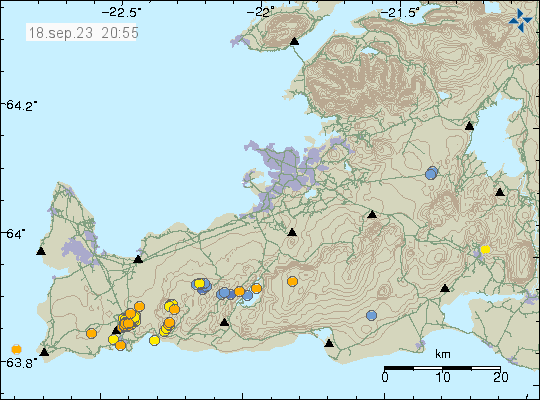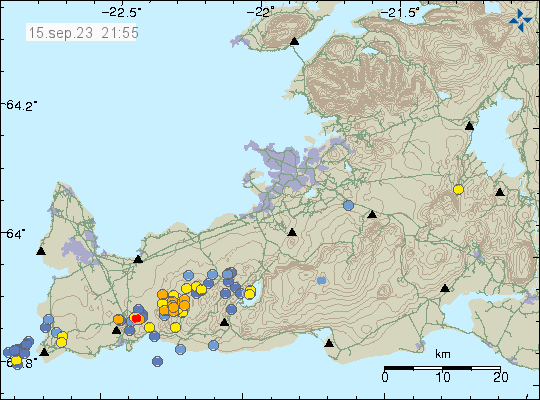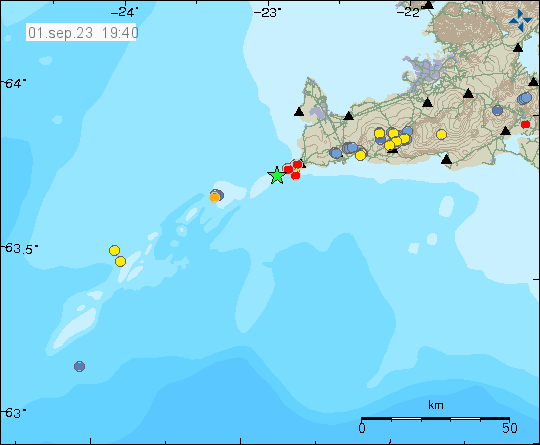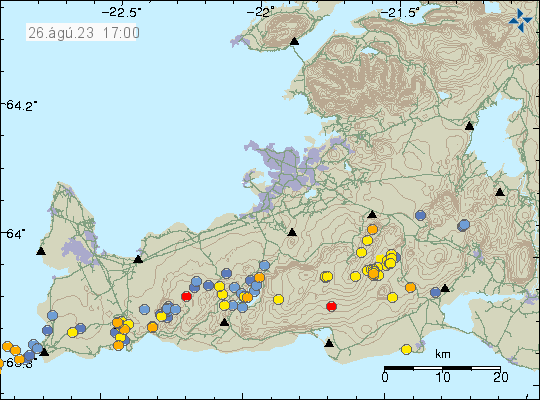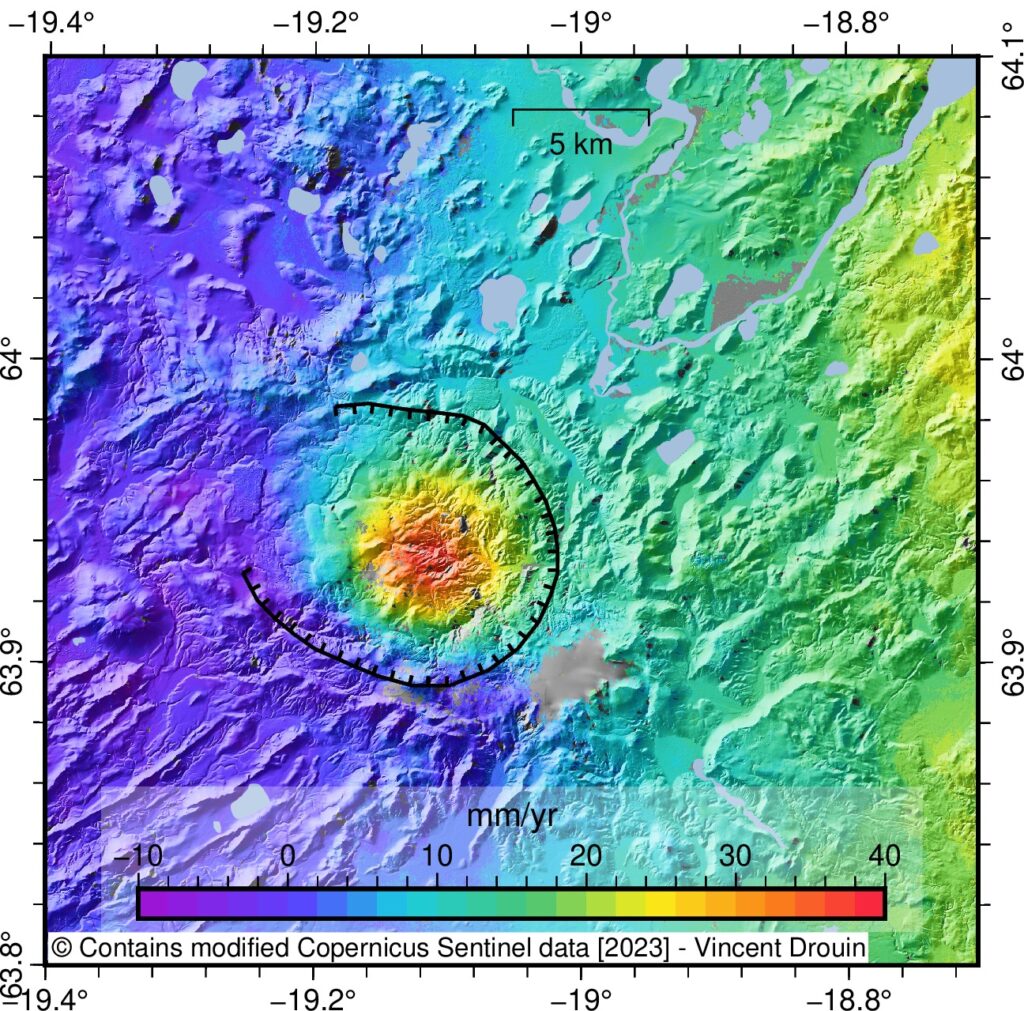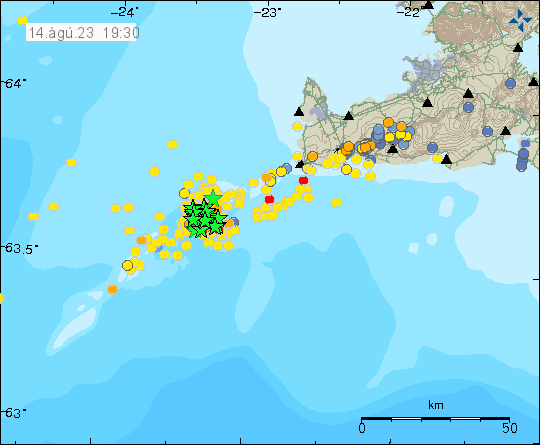I am sorry that I am late on writing this article. I was moving from Denmark to Iceland and that was a lot of effort and I’ve been tired after this move.
On Sunday, 24 September 2023 an earthquake swarm took place in Brennisteinfjöll volcano, in a area called Geitarfell (Goat Mountain) in Brennisteinsfjöll volcano. Largest earthquakes had a magnitude of Mw3,0 to Mw3,2. A lot of smaller earthquakes took place at this same location.
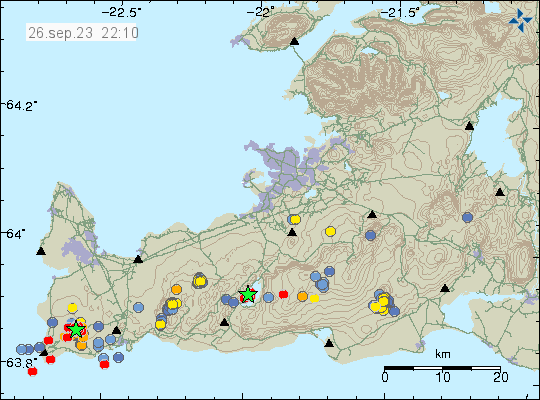
This earthquake activity didn’t have any short term signs that an eruption is about to happen at this location. I don’t know when last eruption took in this location, but it was clearly more than 6000 years ago.
Earthquake webicoders
Since I have moved back to Iceland. I am now recording earthquakes again. The webicoders are going to go online tomorrow (if no delays). They can be found here once they are back online.
